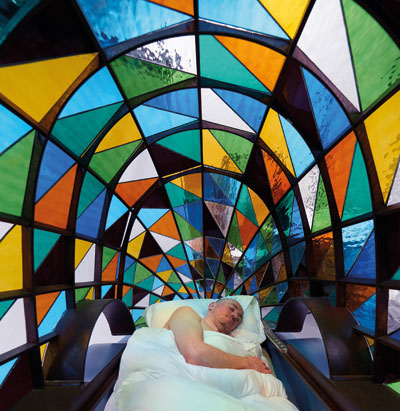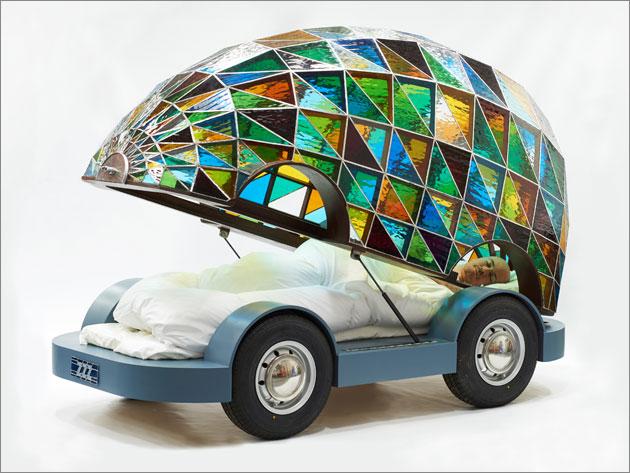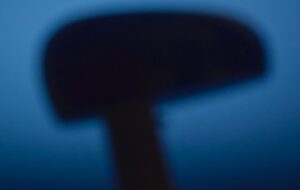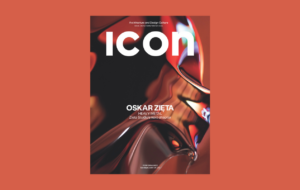|
The British designer will speak at Design Indaba in Cape Town this month about his new work, including his recent driverless stained-glass car Why is it that, when those in the industry conjecture on the future of automobile design, the results look so tediously similar? Sinuous bodies, constellations of LEDs, wraparound windshields – the potential, it seems, is far from endless. That is why London-based designer Dominic Wilcox caused such debate when he revealed his vision for a driverless car last year. Here there was no faceted plastic trim, sweeping grill or head-up display. There was, admittedly, wraparound glass, but not of the toughened, tinted kind you might expect. Instead, Wilcox proffered a stained-glass dome, manufactured using traditional methods. This fragile carapace, which covers a bed to form what the designer terms a “sleeper car”, may not look like the techno-future we’re often assured of, but in fact extends from properly identifying the possibilities that such technology offers. With driving rendered unnecessary and accidents eradicated, the chassis becomes a platform onto which many types of environment might be grafted. Thus the question of car design is simplified to “where would you like to spend a large amount of time?” – to which “stained-glass cocoon” is a perfectly rational answer.
Sleep and drive The volte-face caused by the car project – which he will discuss in his lecture at Design Indaba in February – characterises much of Wilcox‘s work, as does its path from the logical to the fantastical. This is a designer who doesn’t want you to take his work seriously. Seriousness, in his view, is the scourge of creativity; in its place, he champions anti-slickness and the cracking of a wry smile. It is no criticism to say that Wilcox is childlike in his practice: children are comfortable in manipulating the environment to their own ends, something often lost with age, and it is their modus operandi – play – that Wilcox recasts as a powerful form of design thinking: one that mixes wonderment with directness. What Wilcox refines with each work is a way of looking at the world without inhibition, rather than coming up with final solutions. His projects are often formatted as speculations rather than commercial products, running the gamut from working prototypes, such as his Binaudio sound binoculars or his oft-quoted GPS shoes, to books illustrated in his signature toonish drawing style (familiar to Icon readers from his two-year stint as our in-house draughtsman). Unlike much speculative design, which tends to be of the utopian bent, Wilcox attacks the unreconciled challenges of the everyday, turning the banal into the beatific with a shift in perspective. It is perhaps unsurprising that he studied at the Royal College of Art under Ron Arad, one of the few designers who can match him for irreverence. His referents also feel like they operate beyond the standard disciplinary boundaries – his 2014 book Variations on Normal, for instance, shares as much lineage with author Norman Hunter’s madcap Professor Branestawm as with any contemporary design manifesto, while its suggestions for family ponchos and reverse telephones would sit happily in an Ogden Nash poem. Design Indaba takes place from 20 February to 1 March 2015 |
Words Peter Maxwell |
|
|
||
|
|
||



















